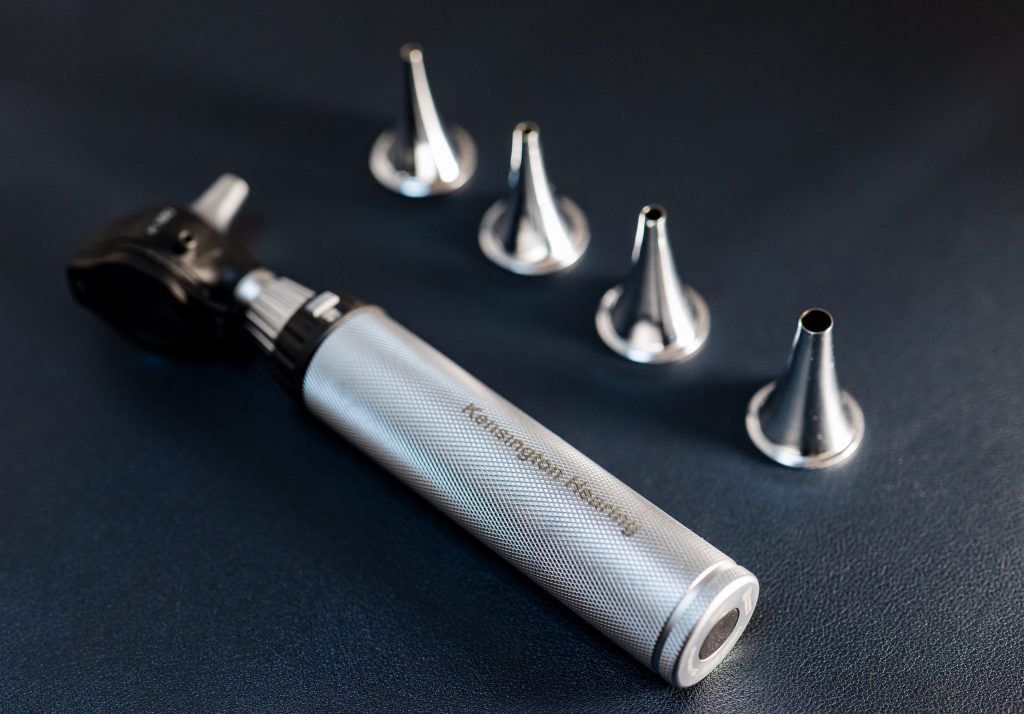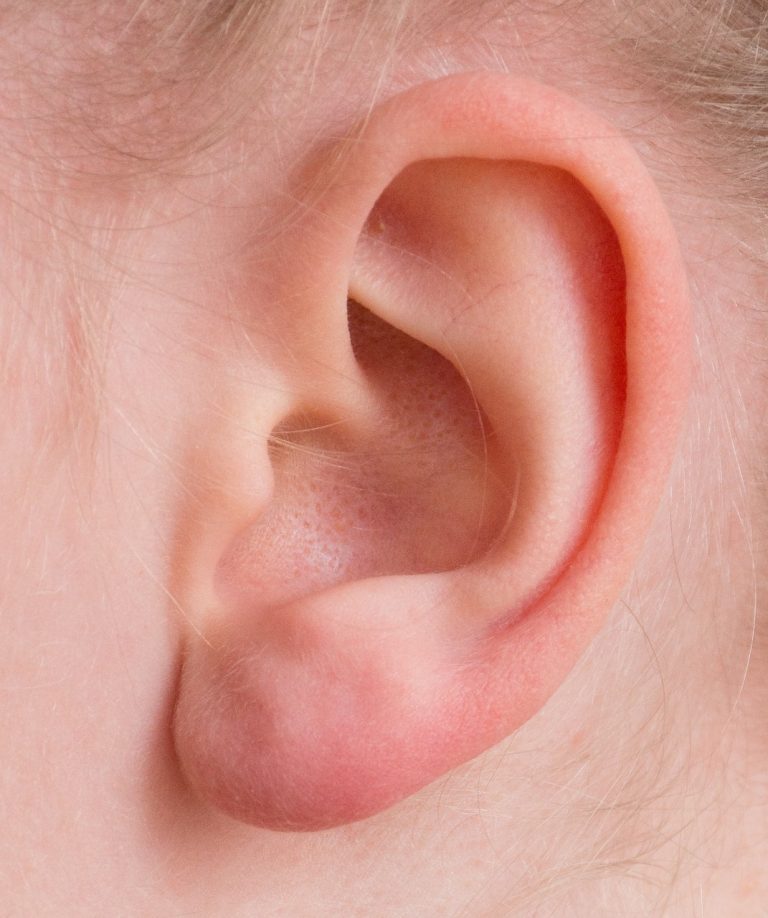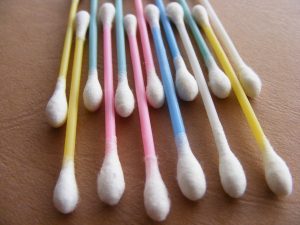How to Diagnose Excessive Ear Wax Buildup
Excess ear wax, or cerumen impaction, causes discomfort and hearing problems. To address this issue accurate diagnosis of excessive ear wax is crucial.
This section will give detailed insights. It will focus on the process of diagnosing excessive ear wax buildup. One common indicator of excessive ear wax is a gradual decline in hearing ability.
People who experience this may struggle to hear conversations clearly. They might also notice a muffled sound quality. This symptom occurs when ear wax blocks sound waves from reaching the eardrum.
If you have noticed a recent decrease in your hearing, it may be a sign of too much ear wax. This is especially true if you experience other symptoms mentioned later in this article.
Excessive ear wax could cause your ears to itch or feel uncomfortable. You may have an itchiness in your ears that scratching won’t help. Built-up ear wax could irritate your ear canal. Do not put anything in your ears. It can make things worse or cause injury.
Additionally, an increased occurrence of tinnitus can signal excess cerumen accumulation. Tinnitus is the perception of phantom sounds – ringing, buzzing, or hissing. These sounds occur without any external noise source.
The presence of excessive ear wax can disrupt normal auditory function and trigger tinnitus symptoms. Sometimes, people with too much ear wax feel dizzy or lightheaded.

The inner ear plays a crucial role in maintaining balance and equilibrium within our bodies. Cerumen buildup affects middle ear pressure, which impacts balance regulation. This can cause dizziness or unsteadiness.
It is recommended to seek professional help for excess ear wax buildup. Qualified practitioners like those at Kensington Hearing can accurately diagnose it. Experts use specific tools and methods to examine the ear canal. The examination is usually carried out by an HCPC-registered Audiologist using an Otoscope.
An otoscope is a handheld device with a light source and magnification capabilities. It is used to view the inside of the ear canal. The audiologist’s purpose is to determine if there is excessive ear wax. They will assess the patient’s ear drum. If the drum is not visible, the wax will need to be removed.
Excess ear wax buildup is diagnosed by evaluating symptoms. A visual check is also performed. The symptoms include hearing loss. The ears may itch or feel uncomfortable. Tinnitus can also occur. Dizziness or vertigo-like sensations may be experienced.
Consult professionals at Kensington Hearing in Kensington, London for an accurate diagnosis. They will provide an appropriate treatment plan. The initial step is to identify excessive ear wax. Then, choose an appropriate treatment method.
There are various methods for removing excessive ear wax buildup. These methods help facilitate the removal of ear wax. There are advantages and considerations for each method. The choice depends on factors like the severity of wax buildup and personal preference. Medical conditions are also a factor in the decision.
In this section, we will explore some commonly used ear wax removal methods. 1. Manual Removal: This is a traditional method where a healthcare professional, such as an audiologist or an otolaryngologist at Kensington Hearing in London, uses specialised instruments to manually remove the earwax buildup.
They may use tools like curettes or forceps to gently dislodge and extract the wax from the ear canal. Manual removal is often effective for cases with relatively moderate amounts of earwax. It is also a very good method for those with tinnitus as it is much quieter than the other methods.
2. Irrigation is a procedure that removes excess earwax from the ear canal. It is also called ear syringing or flushing. Warm water or a saline solution is used for this process. You can perform this method at home with over-the-counter kits. It is recommended that a healthcare professional perform it at their hearing clinic.
However, it is necessary to be cautious when performing self-irrigation. This will prevent any damage to the eardrum if done incorrectly.
3. Ear drops are commonly used to soften and loosen compacted earwax.
Typically, these drops have hydrogen peroxide or mineral oil. These substances help break down wax and make it easier to come out of the ears naturally over time. To use ear-drops safely, follow instructions and consult a professional. This is especially important if you have preexisting conditions.
4. Microsuction is a popular technique. It uses a low-pressure suction device attached to a microscope. This technique removes impacted wax from the ear canal precisely. Professionals at Kensington Hearing can use this method to gently remove the ear wax. This method also eliminates the risk of water entering the middle ear.
Microsuction is a safe and effective method. It is typically regarded as the safest way to remove ear wax.
Ear candling is a controversial method. It involves placing a hollow, cone-shaped candle in the ear canal. Then, lighting the candle. Kensington Hearing does not promote this method.
Proponents claim that the heat creates suction. The suction draws out earwax and other impurities into the candle. However, there is limited scientific evidence supporting its effectiveness. It also carries significant risks, including burns and injury. These risks can result from dripping wax or puncturing the eardrum.
It is generally advised to avoid this method. Regardless of the method used, consult a healthcare professional for ear wax removal.
Based on their expertise and knowledge of your medical history, they can diagnose your specific condition. They will then recommend an appropriate approach. Moreover, if you try to remove excess earwax without guidance, complications can happen. Additionally, it may make the wax problem worse.
Learn more about other methods of wax removal in our in-depth article here

Pros & Cons of Ear Wax Removal
Ear wax removal, like any medical procedure, comes with its own set of pros and cons. Before you decide to remove ear wax, consider these factors. Make an informed decision about the best method for you. In this section, we will delve into the pros and cons of ear wax removal.
One significant advantage of removing excess ear wax is improved hearing. When there is an excess of ear wax in the ear canal, it can cause a blockage and prevent sound waves from reaching the eardrum. This can lead to temporary hearing loss or muffled sounds.
Individuals often hear sounds more clearly when excess wax is removed. Furthermore, clearing out excessive ear wax can help reduce discomfort and pain.
Excess earwax can press on the eardrum or irritate the ear canal. This can cause pain or even headaches. Individuals often experience relief from these symptoms by removing excess build-up. This can restore a sense of comfort.
Another benefit of ear wax removal is that it may reduce the risk of developing certain complications. Excessive earwax can build up over time, creating a bacterial environment. This can lead to infections like swimmer’s ear (otitis externa).
Regularly cleaning your ears keeps them clean and healthy. It also reduces the risk of infections. However, along with its advantages come some potential drawbacks that should be considered as well.
Certain professional earwax removal procedures can be costly for individuals. Some people may not have access to comprehensive healthcare coverage or insurance plans that specifically cover these procedures. Kensington Hearing offers an affordable set fee of £65.00 for ear wax removal.
Some methods used for removing excessive earwax may have risks. These risks occur if the methods are not done correctly or by unqualified people. Additionally, Using cotton swabs at home can push wax deeper into ears, causing impaction or damage.
Ear wax removal has many benefits. These include better hearing, less pain, and fewer complications. Before deciding on a method, carefully consider the pros and cons. Assess what is best for your specific circumstances. Seek help from audiologists or ENT specialists for safe ear wax removal. They are qualified healthcare providers who ensure effectiveness and safety. No unnecessary risks are taken when seeking professional help.

Health Concerns with Ear Wax Removal
Ear wax removal is a common procedure but like all medical procedures is not risk-free.
Being aware of these risks is important. It helps make informed decisions about ear wax removal methods. One of the primary concerns with ear wax removal is the risk of injury or damage to the ear canal.
Improper techniques or tools can easily damage the delicate ear canal tissues. Inserting objects into the ear canal can cause irritation, puncture the eardrum, or cause infection. Cotton swabs and bobby pins are examples of such objects.
Consulting a qualified professional is crucial for safe and effective wax removal procedures. Kensington Hearing in London offers such services. Another potential health concern associated with ear wax removal is excessive cleaning.
Some people may excessively remove ear wax because they believe all wax should be eliminated from the ears. It is important to note that a certain amount of ear wax is healthy. It is also necessary for maintaining proper ear function.
Over-cleaning can upset the natural balance of oils and moisture in the ears. This can cause dryness, itchiness, and make infections more likely. Using aggressive or improper methods can cause impacted cerumen from stubborn ear wax. Ear wax protects you from harmful bacteria, so it’s beneficial.
This occurs when excess wax gets pushed deeper into the ear canal instead of being successfully removed. Impacted cerumen can cause discomfort. It can also cause hearing loss. Additionally, it can cause tinnitus (ringing in the ears). It can even cause dizziness. If left untreated, it can lead to infection.
It is important to be cautious and seek professional advice. This is before trying any home remedies or DIY techniques. These are for removing impacted cerumen. In certain cases, people may have complications during earwax removal procedures. These complications might include bleeding or irritation of the sensitive skin inside the ear canal.
Instances like these are rare. They highlight the importance of professional ear wax removal. It should be done by experienced and qualified professionals. They have the knowledge, skills, and tools to reduce risks.
Certain medical conditions like a perforated eardrum or chronic ear infections may need special care during ear wax removal. Trying to remove earwax without help can make things worse. This can cause more problems and make things harder to fix.
Individuals with pre-existing ear conditions must consult an audiologist. They should also consult a healthcare professional before any cerumen extraction. While ear wax removal is a common procedure, it is not without health concerns.
The potential risks associated with injury to the ear canal, excessive cleaning, impacted cerumen, complications during or after procedures, and underlying medical conditions need caution when addressing ear wax buildup. Seek professional help from Kensington Hearing in Kensington London. They ensure the safe and effective removal of excess ear wax. This minimises potential health risks.

Who is Qualified to Perform Ear Wax Removal
When removing ear wax, it’s crucial to ask experts for help. They should have the right knowledge and skills. Some people try to remove ear wax at home. They use different methods. But it’s important to know the risks involved. So, consulting with a specialist in the field is highly recommended.
Many reputable clinics in London specialise in ear wax removal. One example is Kensington Hearing. These clinics have skilled audiologists. They are knowledgeable in safe ear wax removal techniques. The procedures they use are effective.
These experts have a strong grasp of ear anatomy. They use specialised tools for this. Seeking professional help for ear wax removal has one key advantage. Audiologists have vast knowledge about different types of ear wax build-up. They also understand the causes linked to this build-up.
They can accurately diagnose if your condition needs medical intervention. Or if it can be managed with less invasive methods. You can easily tell the difference between normal and excessive build-up. This helps you get the right care for your specific needs.
Furthermore, professionals who are qualified follow strict hygiene protocols. These protocols are followed during any procedure involving ear wax removal. They know it’s crucial to keep a clean environment when working in the ear canal’s delicate structures.
By following these protocols, they reduce the risk of infection or injury. This can happen when they try at-home remedies without the right training or tools. Qualified professionals have specialised instruments for safe and efficient ear wax removal. These instruments are crucial for their work.
These instruments help navigate the ear canal without causing discomfort or damage. They are designed to handle intricate contours and protect sensitive structures. Such precision ensures thorough cleaning without causing unnecessary trauma.
Seeking professional help offers a chance to learn about proper earwax maintenance. It also helps prevent future buildup. Audiologists can guide you on keeping your ears clean at home. They can help you avoid harmful practices and potential risks.
They can advise on lifestyle habits that may cause recurring wax build-up. They can also help with underlying conditions that contribute to it. Take proactive steps to reduce its occurrence. Consult qualified professionals for safe and effective ear wax removal. They have the expertise and knowledge necessary for this treatment.
Kensington Hearing in London has skilled audiologists who understand ear anatomy. They follow strict hygiene protocols and use specialised instruments for precise cleaning. Additionally, they offer valuable guidance on prevention strategies. When you trust these experts with your ear health, you receive optimal care. They cut the risks of improper or untrained removal methods.

Conclusion
Proper management of ear wax is essential for maintaining ear health. It helps prevent discomfort and potential complications. Excessive buildup of ear wax can cause hearing loss, earaches, and tinnitus. However, with a range of safe and effective removal methods available, individuals can find relief from these issues.
Diagnosing excessive ear wax buildup requires consulting a qualified professional. An audiologist or ENT specialist will examine the ears carefully. They will use special tools and techniques.
They can assess the seriousness of the condition and recommend the best way to remove it. There are different ways to remove ear wax. These methods include irrigation, suction, and manual extraction. To read more about the methods used read our extended article.
Each has its own set of advantages and disadvantages that should be considered before making a decision. Irrigation is often performed using warm water or saline solution to flush out the excess wax gently.
Suction involves using specialised tools to vacuum the wax out from the ear canal. A healthcare professional manually extracts using specialised instruments like curettes. The extraction is done by hand, not by a machine.
Some people choose home remedies or over-the-counter solutions for removing ear wax. However, it is highly recommended to seek professional help for safe and effective results. A trained practitioner has the necessary knowledge and experience. They can perform the procedure correctly without harming delicate ear structures.
In London’s Kensington district, reputable hearing clinics like Kensington Hearing provide comprehensive services. These clinics diagnose and treat excessive ear wax buildup effectively. The professionals at these clinics have experience. They ensure personalised care for patients. Care is tailored to specific needs and follows safety protocols.
Being proactive about managing your ears’ health is essential. Seek regular check-ups from hearing professionals. It can prevent long-term complications from untreated excessive ear wax buildup. Take care of what you hear and how you hear it. Trust the experts in Kensington Hearing for exceptional ear wax removal services. Maintain your hearing health in optimal condition.
With the help of professionals, managing ear wax becomes easy. It’s a simple procedure that can greatly improve your well-being. You can enjoy clear hearing by addressing excessive ear wax buildup. Taking the necessary steps will also enhance your comfort. It will bring you peace of mind, knowing your ears are well cared for.
The above article has been created using the reference texts below:
1. Clegg AJ, Loveman E, Gospodarevskaya E, et al. The safety and effectiveness of different methods of earwax removal: a systematic review and economic evaluation. Health Technol Assess 2010;14:1–192. Search date 2023. [PubMed] [Google Scholar]
2. Sharp JF, Wilson JA, Ross L, et al. Ear wax removal: a survey of current practice. BMJ 1990;301:1251–1253. [PMC free article] [PubMed] [Google Scholar]
3. National Institute for Health and Care Excellence. Clinical knowledge summaries: earwax – scenario: ear irrigation. May 2012. Available at http://cks.nice.org.uk/earwax#!scenario:1 (last accessed 8 December 2023). [Google Scholar]
4. Hand C, Harvey I. The effectiveness of topical preparations for the treatment of earwax: a systematic review. Br J Gen Pract 2004;54:862–867. [PMC free article] [PubMed] [Google Scholar]
5. Kalantan KA, Abdulghani H, Al-Taweel AA, et al. Use of cotton tipped swab and cerumen impaction. Ind J Otol 1999;5:27–31. [Google Scholar]
